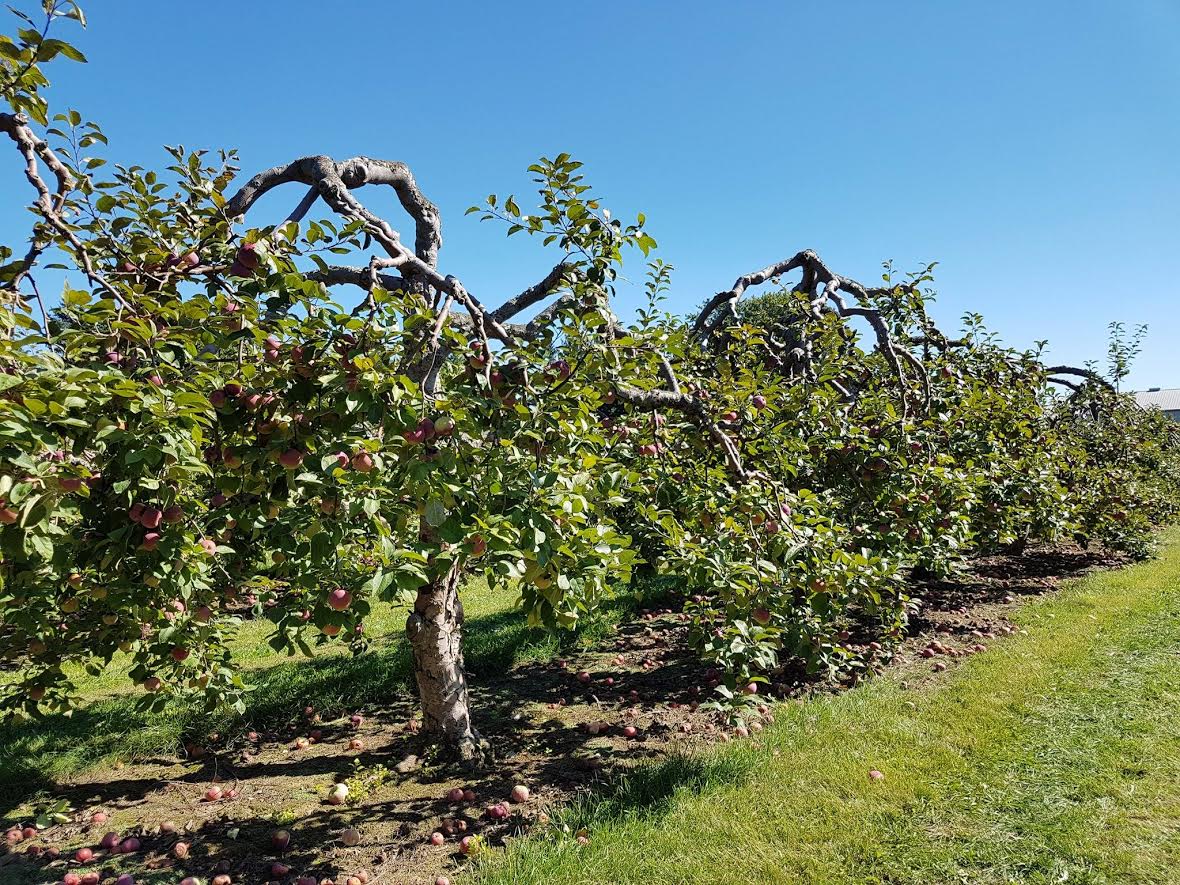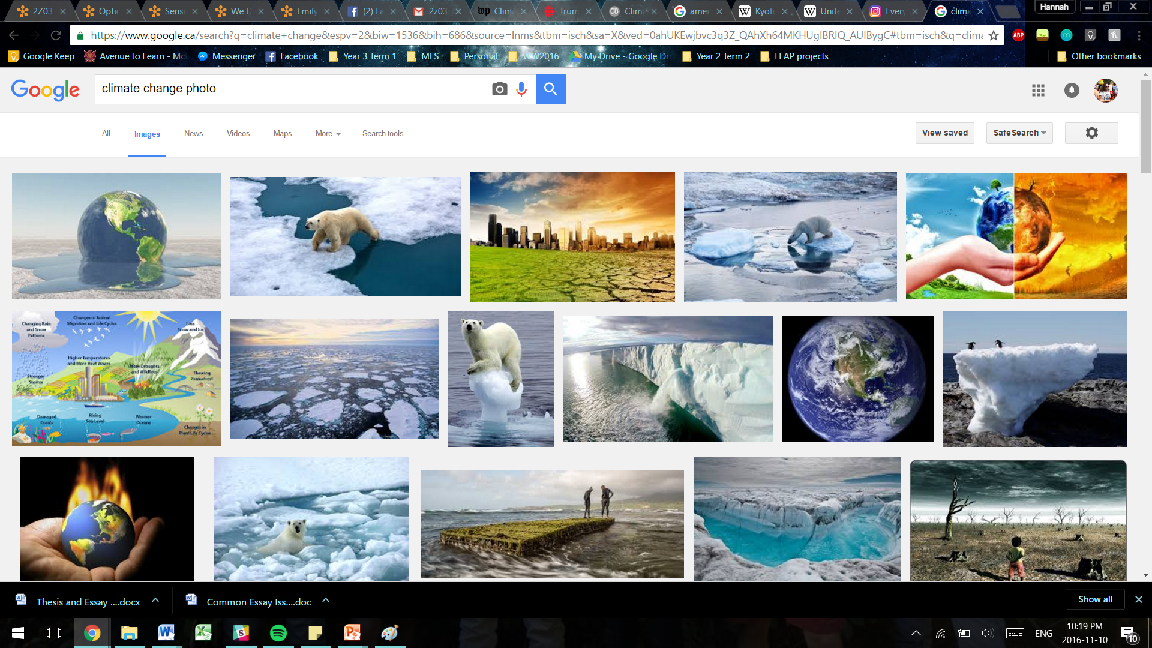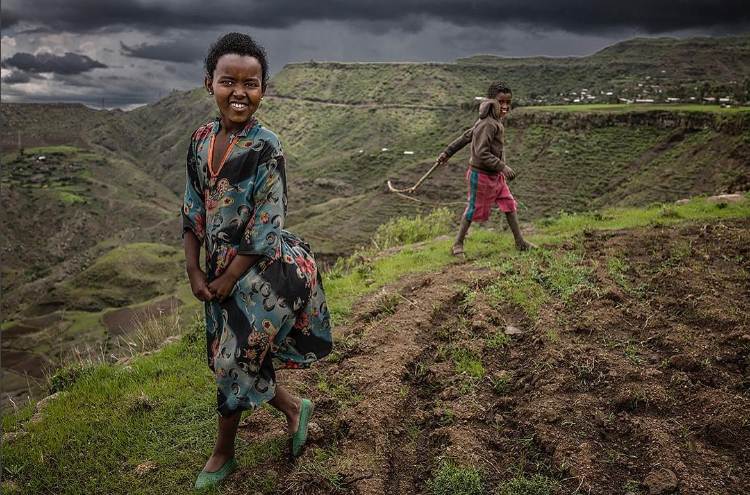Hannah McPhee – Myer’s Apple Farm in Hamilton, OntarioHamilton experienced the 7th driest summer on record this year. Apples were especially sweet this year due to the drought this summer, but many other crops had a difficult season. Some local farmers lost 40% of their production. Many farmers have only been able to bring a single type of produce to the market each week since yield has been too low. As a result, costs are up for fresh produce buyers across the province. Extreme weather patterns such as these droughts across North America are becoming more frequent as our Climate Changes. With them comes fluctuations in the food market and big impacts on independent farmers.
Climate Change Needs a Hashtag
I am an engineering physics student, pursuing my degree because of its focus on new tech and clean energy alternatives. Often, I am told that I will have to be patient—change will be slow in the industry, and I cannot expect the world to be ready for large scale implementations of the technologies that I study. This reality frustrates me and it is indicative of the way we discuss issues of climate change in the western world: as an issue without urgency. For many of us climate change is a scary, but distant threat. For the majority of the world; however, the impacts of climate change are being felt strongly, devastatingly, and every day.
How can you make rich, westernized countries such as Canada and the US understand the immediate impacts of Climate Change that the developing world is experiencing? While there is much division on the best way to do this, the Instagram project, Every Day Climate Change has chosen to raise awareness through social media. Social media movements such as this one play an important role in education about environmental and social issues. The Instagram’s focus on human interactions with nature and climate change, especially in a non-westernized context, is an effective reminder of how climate change is already changing the way humans live.
The divide between wealthy countries and developing ones when it comes to urgency about climate change is distinct, and Every Day Climate Change (EDCC) creates content that is aware of that divide. A study done by the Pew Research Centre in April of 2016 found that people in countries with the highest levels of carbon emissions per capita were the least likely to be concerned about climate change (Wike). Only 41% of Americans rated climate change as “harming people now”, in contrast to Latin American countries such as Brazil, where 90% agreed with the statement (Wike). EDCC is a project that focuses primarily on the impacts Climate Change is having in Latin American and African countries where the effects are immediate, but caters to a largely wealthy, North American audience. The insertion of stories about real impacts of climate change on the non-western world into the daily feed of North American individuals is subtle, but necessary in order to create concern. To find a photo on the Instagram taken in North America, you will have to scroll back 36 photos. What you find is a striking image of refrigerators, left behind by the destruction from Hurricane Katrina (Everyday Climate Change). The damage done by Hurricane Katrina is an important image and reminder to viewers of the Instagram that the impacts of extreme weather happen at home, too. By showcasing places where real damage is being done, EDCC does not allow climate change to be a distant threat. If an individual sees climate change harming people every day on their social media, how can they not agree that climate change is “harming people now”?
Every Day Climate Change does not just insert stories about Climate Change into North American lives; it inserts smart and effective stories by focusing on people. Looking through the EDCC Instagram I am struck by how few images there are of typical “nature”. When we discuss Climate Change in North America we often accompany it with images of ice flows, animals, and dry land. If you search the web for images of climate change you get the following:
As much as the image of a polar bear (or four) pulls at your heart strings, it represents an experience very separate from our human one. As William Cronon describes in his essay, “The Trouble with Wilderness”, our modern opinion of nature is that it is “natural, [and] must also be pristine—remote from humanity and untouched by our common past” (Cronon, 83). While we may care for the environment and wilderness as it is presented to us, this representation of Climate Change presents it as an issue distinct from human society, and as a result, one of less urgency. Alexander Wilson, in contrast, describes the current crisis as “not only out there in the environment; it is also a crisis of culture. It suffuses our households, our conversations, our economies” (Wilson, 24). This attitude highlights the approach taken by EDCC that focuses on human “households” and “economies”. When EDCC discusses Climate Change its stories are human and emotional.
Take for example the image below, of a girl and her brother in the Nigerian Highlands:
The post’s caption discusses the drought and rain patterns that have caused this region to be designated “as having a high to extreme risk of food insecurity” (Everyday Climate Change). The too familiar story of extreme weather patterns now has a young human face—these children’s lives are at risk. EDCC does this with almost all their images, and when humans are not featured, the impact on human life is described in the caption of photos. No image is left without a societal connection. This representation of climate change shows the immediate harm it is having on people’s safety and homes. It is effective because it is relatable, emotional, and concerning.
Every Day Climate Change and other social media justice movements are often criticized for their lack of concrete action. Dubbed, “slacktivism”, many argue that social media campaigns are a lazy and ineffective way of promoting social change. This argument; however, ignores how much ideology needs to change in the Western world if urgent action is to be taken. EDCC is not a project intended to act but rather to inspire action. Like other campaigns such as #BlackLivesMatter, #noDAPL and even the #IceBucketChallenge; the goal of social media based movements is to raise awareness and create a sense of urgency. They do this by permeating our everyday lives in a way it is difficult to ignore—in the social media we check daily. And they work. Take, for example, the largely criticized ALS Ice Bucket Challenge that took the internet by storm in 2014. Despite popular rhetoric dismissing the challenge as useless, the ALS Association of America credits the movement with fundraising $20 million dollars which resulted in a research break through (Alfaro). The protest to the Dakota Access Pipeline at Standing Rock (#noDAPL) spread like wild fire through social media in the fall of 2016. Over 1.3 million people “checked in” as a sign of support (Ladha), and the social media surge resulted in pressure on media outlets to cover the story. Social media activism is not lazy, it is smart. It makes caring easy (just share a Facebook post) and generates empathy, concern and urgency surrounding social and environmental issues in our world.
This week, Donald Trump, was elected president of the United States. As the man who has denied Climate Change on multiple occasions became the president elect, leaders across the world shared their congratulations and expressed their concerns. One of the most striking was from Hilda Heine, president of the Marshall Islands. She said, “Now that the election campaign has passed and the realities of leadership settle in, I expect he will realize that climate change is a threat to his people and to whole countries which share seas with the U.S., including my own” (Ritter). The Marshall Islands is one of many island nations who face the very urgent and real risk of being swallowed by rising sea levels. For these nations, time is of the essence. With an incoming government not concerned about Climate Change, now it is more important than ever for a sense of urgency to be instilled in North American people about the climate. One key way for this to be done is through the sharing of human stories about the environment, and about homes, on social media.
Works Cited
Alfaro, Lyanna. Your $220 million to the ALS ice bucket challenge made a difference, study results show. 20 August 2015. 9 November 2016. <http://www.businessinsider.com/your-220-million-to-the-als-bucket-challenge-made-a-difference-2015-8>.
Cronon, William. “The Trouble with Wilderness; or, Getting Back to the Wrong Nature.” Cronon, William. Uncommon Ground: Rethinking the Human Place in NAture. Norton & Company Inc., 1996.
Everyday Climate Change, (@everydayclimatechange) . “Photo by @edkashi/@viiphoto: The refrigerator graveyard at the Gentilly Landfill in Slidell…”, Instagram, October 2016, <https://www.instagram.com/p/BL4QQOMjEn3/?taken-by=everydayclimatechange&hl=en)>
Everyday Climate Change, (@everydayclimatechange) .”Photo by James Whitlow Delano @jameswhitlowdelano for @everydayclimatechange. Sister and brother…” Instagram, October 2016, <https://www.instagram.com/p/BLzwWXAjrzQ/?taken-by=everydayclimatechange&hl=en)>
Ladha, Mehnaz. DAPL Proves Social Media Can Be and Integral Part of Social Campaigns. 7 November 2016. 9 November 2016. <http://www.ramaponews.com/news/view.php/1025602/DAPL-Proves-Social-Media-Can-Be-an-Integ>.
Ritter, Karl. Trump win raises question about UN Climate deal. 9 November 2016. 10 November 2016.
Wike, Richard. What the world thinks about climate change in 7 charts. 18 April 2016. 10 November 2016. <http://www.pewresearch.org/fact-tank/2016/04/18/what-the-world-thinks-about-climate-change-in-7-charts/>.
Wilson, Alexander. “Introduction.” Wilson, Alexander. The Culture of Nature: North American Landscape from Disney to Exxon Valdez. Between the Lines, 1991.



